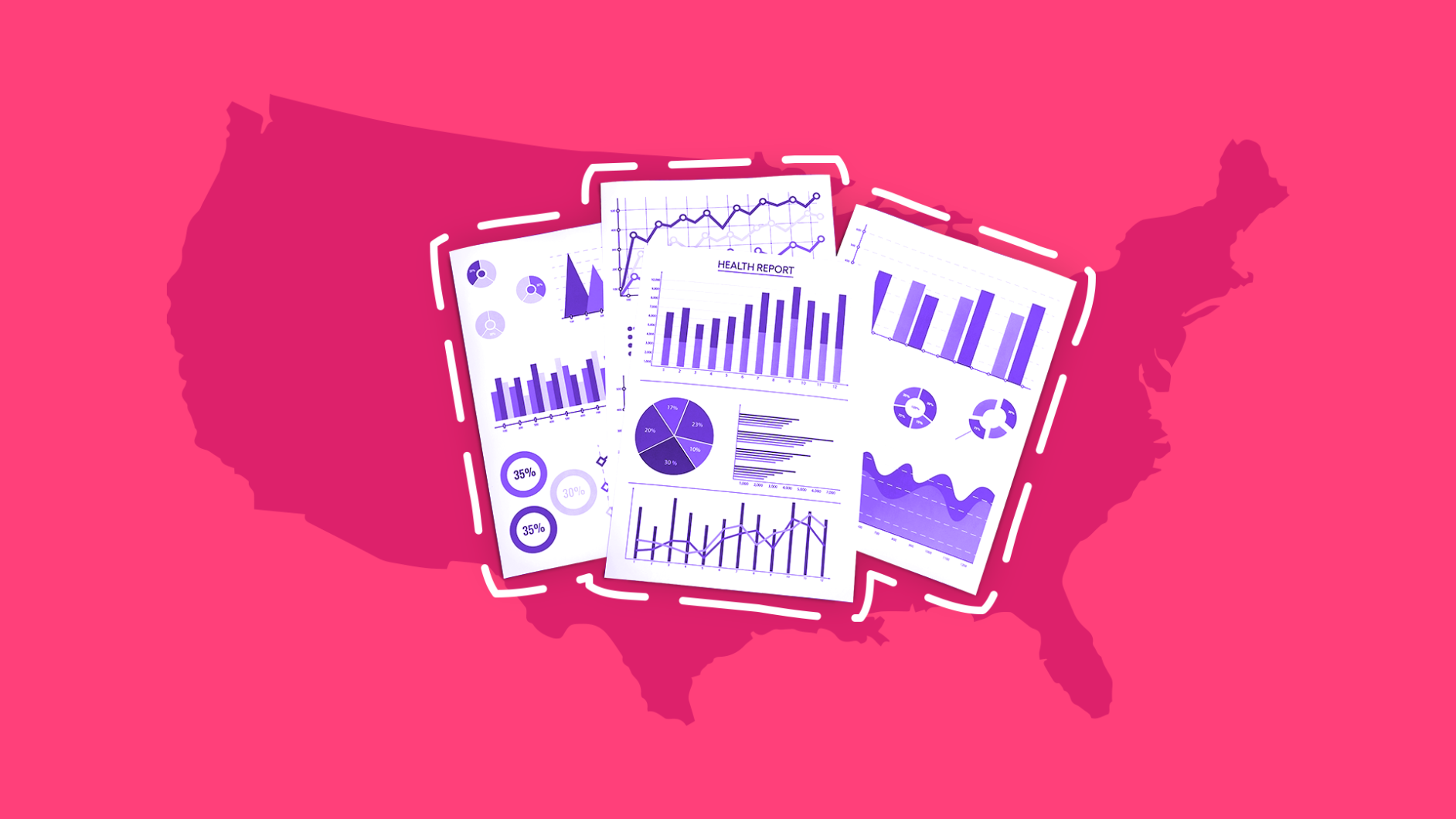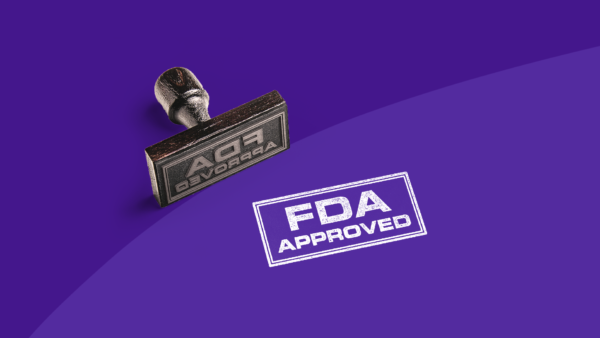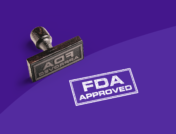What is ADHD? | How common is ADHD? | Child ADHD statistics | Teen ADHD statistics | Adult ADHD statistics | ADHD in the classroom | ADHD treatment | Research
A restless, easily distracted child is more common than not, especially in the school-age range. However, when these actions interfere with his or her school work and result in frequent disciplinary action, parents might wonder if there’s more to this behavior than kids just being kids. Attention deficit hyperactivity disorder (ADHD) is one of the most common neurodevelopmental disorders among children in the U.S., as supported by the ADHD statistics in our guide below. Fortunately, there are multiple medications and types of behavioral therapy to help children and adults with ADHD.
RELATED: Is your child being misdiagnosed with ADHD?
What is ADHD?
Attention deficit hyperactivity disorder (ADHD) is a common disorder marked by an ongoing pattern of inattention and/or hyperactivity-impulsivity that interferes with functioning or development. Behaviors, or symptoms, of ADHD include chronic inattention, hyperactivity, and impulsivity. Many are diagnosed with ADHD as children, as symptoms become prominent in early development and academic work. ADHD symptoms can persist into adulthood and affect one’s social relationships as well as academic and work performance.
“ADHD is a neurological disorder, although the exact cause has yet to be determined,” says Gabriel Villarreal, LPC, a counselor at ADHD Counseling in the Roanoke Valley in Virginia. “What we know is that it occurs when the prefrontal cortex growth lags behind the rest of the brain.”
“The earliest we can diagnose this disparity is 3 years old,” Villarreal says. “However, [people with ADHD] also have a lack or don’t as readily produce neurochemicals in the brain, specifically dopamine and norepinephrine. The former is responsible for attention, drive, and motivation. The latter, is responsible for creating calm, it’s what’s partially responsible for the [hyperactivity].”
How common is ADHD?
- Worldwide surveys have demonstrated that the prevalence of ADHD is higher in higher-income countries. (ADHD Attention Deficit and Hyperactivity Disorders, 2017)
- The U.S. lifetime prevalence of ADHD among children is rising with the latest estimates at 11%. (National Institute of Mental Health, 2017)
- An estimated 6.1 million American children aged 2-17 years old had ever received a diagnosis of ADHD, representing 9.4% of this total age-group nationwide as of 2016. (Journal of Clinical Child and Adolescent Psychology, 2018)
- Boys are more than twice as likely than girls to have ever been diagnosed with ADHD. (Journal of Clinical Child and Adolescent Psychology, 2018)
- The worldwide prevalence of adult ADHD is estimated at 2.5%. (Royal College of Psychiatrists, 2009)
- The U.S. lifetime prevalence of ADHD in adults aged 18 to 44 years of age is estimated to be 8.1%, with current prevalence estimated to be 4.4%. (National Institute of Mental Health, 2017)
ADHD statistics in children
- The percentage of children ever diagnosed with ADHD increases with age. Surveys show 2.4% (388,000) of children aged 2 to 5 years old, and 9.6% (2.4 million) of children aged 6 to 11 years old have been diagnosed with ADHD.
- The median age of diagnosis for severe ADHD is 4 years old.
- The median age of diagnosis for moderate ADHD is 6 years old.
- The median age of diagnosis for mild ADHD is 7 years old.
(Journal of the American Academy of Child and Adolescent Psychiatry, 2014 & 2018)
ADHD statistics in teens
The following figures represent the estimated percentage of adolescents with ADHD per age group:
- Ages 13 to 14: 8.8%
- Ages 15 to 16: 8.6%
- Ages 17 to 18: 9%
- Of all adolescent ADHD cases, 4.2% showed severe impairment. Impairment criteria were based on the fourth edition of the Diagnostic and Statistical Manual of Mental Disorders (DSM-IV).
(Journal of the American Academy of Child and Adolescent Psychiatry, 2010)
ADHD statistics in adults
ADHD prevalence among adults was 4.4% in the U.S. as of 2001-2003, according to Harvard Medical School. However, the rate of ADHD in adults is likely underreported as 85% of children with ADHD will likely have the disorder as adults. Diagnostic criteria for ADHD were initially developed for children, and therefore, the diagnosis of ADHD among adults is growing four times faster than ADHD diagnoses among children in America (JAMA Psychiatry, 2019). The following figures represent the known estimated percentage of adults with ADHD per age group:
- Ages 18 to 24: 4.5%
- Ages 25 to 34: 3.8%
- Ages 35 to 44: 4.6%
(Harvard Medical School, 2007)
“Research suggests that the majority of youth with ADHD will also have ADHD as adults,” says Nekeshia Hammond, Psy.D, a psychologist at Hammond Psychology and Associates in Florida. “One critical thing for youth to do is learn to manage their ADHD symptoms, which may positively impact their adult outcomes. Anecdotally, some adults have described experiencing milder impairments in functioning because they have learned triggers and ways to cope with their ADHD symptoms.”
Some adults previously diagnosed with ADHD have learned to cope with their symptoms well and do not meet the criteria for ADHD later in their life. “They would not necessarily meet ‘full criteria’ for ADHD (they may still have some of the attention symptoms, but not enough to receive a diagnosis),” Dr. Hammond says. “Most research suggests that ADHD does not really ‘go away,’ but more so adults report less symptoms. For instance, hyperactivity symptoms typically decrease with age.” Only 11% of adults with ADHD receive treatment.
In addition, some adults may go undiagnosed and therefore untreated because of co-occurring mental health conditions that mask the symptoms of ADHD. These include:
- Anxiety disorder: 47%
- Mood disorders: 38%
- Impulse control: 20%
- Substance abuse disorders: 15%
(Primary Care Companion to the Journal of Clinical Psychiatry, 2009)
ADHD in the classroom
“Sometimes children can interrupt or ‘blurt out’ answers often, which also impacts social interactions,” Dr. Hammond explains. “At other times, some youth can have problems with self-control, leading to verbal or physical altercations with other students.”
She says that each child’s academic experience is different. “Some children struggle academically due to significant difficulties with attention and/or hyperactivity, whereas other students who have learned to cope with the ADHD symptoms may experience less academic disruptions,” she says.
“Schools can accommodate children with ADHD with modifications in the classroom,” says Dr. Hammond. “Some examples of modifications include, but are not limited to: taking additional breaks, assigned seating arrangement (e.g. sitting closer to the teacher), extended time on tests, quizzes, and assignments, as well as taking tests in a separate setting to reduce distractions.”
The 2014 National Survey of the Diagnosis and Treatment of ADHD and Tourette Syndrome identified that the majority of students with ADHD (69.3%) received one or more school services. Individualized education plans (IEP) and section 504 plans are two possible school services for students with special education requirements or needs (Journal of Attention Disorders, 2018).
According to the Centers for Disease Control and Prevention (CDC), IEPs and 504 plans provide:
- Extra time on tests
- Assignments tailored to the child
- Positive reinforcement
- Technology-assisted tasks
- Additional breaks
- Changes to the classroom to limit distraction
- Additional help with organization
Another study used data from this survey and found that children 4 to 17 years old with ADHD received one or more of the following behavioral treatments:
- 31% received parent-delivered behavior therapy
- 39% received social skills training (such as support in how to interact with others)
- 30% received peer interventions (such as peer tutoring)
- 20% received cognitive behavioral therapy
(Journal of Pediatrics, 2018)
ADHD treatment statistics
The most effective ADHD treatment is a combination of medication and behavioral therapy. Stimulant medications, like Adderall and Ritalin, are usually prescribed first. If stimulants don’t work, a healthcare provider might try a non-stimulant medication such as Strattera. These medications affect dopamine and/or norepinephrine to help patients concentrate and feel less impulsive.
Cognitive behavioral therapy (CBT) is a popular form of behavioral treatment for people, especially children, with ADHD. A professional therapist can teach children how to express their thoughts and feelings without being disruptive to others. Parents and teachers can also gain insight through CBT for learning how to reward positive behaviors.
As of 2016, 77% of children with ADHD aged 2 to 17 were receiving some form of treatment, with approximately one-third (32%) receiving both medication and behavioral treatment.
- 62% take ADHD medication, the majority of which are aged 6 to 11 years old.
- 30% take medication alone.
- 47% receive behavioral treatment, the majority of which are aged 2 to 5 years old.
- 15% receive only behavioral treatment.
(Journal of Clinical Child and Adolescent Psychology, 2018)
ADHD research
- National comorbidity study replication (NCS-R), Harvard Medical School
- Trends in the parent-report of health care provider-diagnosed and medicated attention-deficit/hyperactivity disorder: United States, 2003-2011., Journal of the American Academy of Child and Adolescent Psychiatry
- Lifetime prevalence of mental disorders in U.S. adolescents, Journal of the American Academy of Child and Adolescent Psychiatry
- Prevalence of parent-reported ADHD diagnosis and associated treatment among U.S. children and adolescents, Journal of Clinical Child and Adolescent Psychology
- Trends in the prevalence and incidence of attention-deficit hyperactivity disorder among adults and children of different racial and ethnic groups, JAMA Psychiatry
- Diagnostic And Statistical Manual Of Mental Disorders, Fifth Edition, American Psychiatric Association
- Prevalence and correlates of adult attention-deficit hyperactivity disorder: meta-analysis, Royal College of Psychiatrists
- The descriptive epidemiology of DSM-IV adult ADHD in the World Health Organization World Mental Health Surveys, ADHD Attention Deficit Hyperactivity Disorders
- Assessing adults with ADHD and comorbidities, Primary Care Companion to the Journal of Clinical Psychiatry
- A national description of treatment among U.S. children and adolescents with ADHD, Journal of Pediatrics
- Predictors of receipt of school services in a national sample of youth with ADHD, Journal of Attention Disorders
- ADHD in the classroom, Centers for Disease Control and Prevention (CDC)











